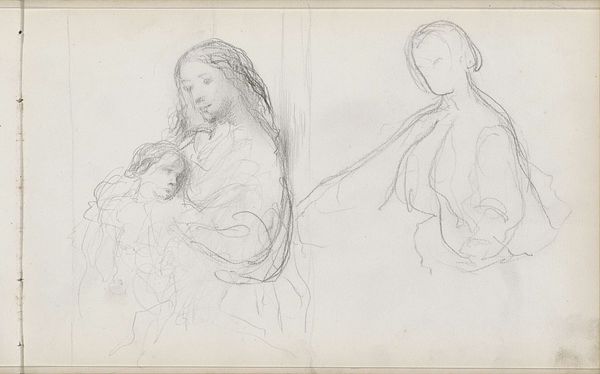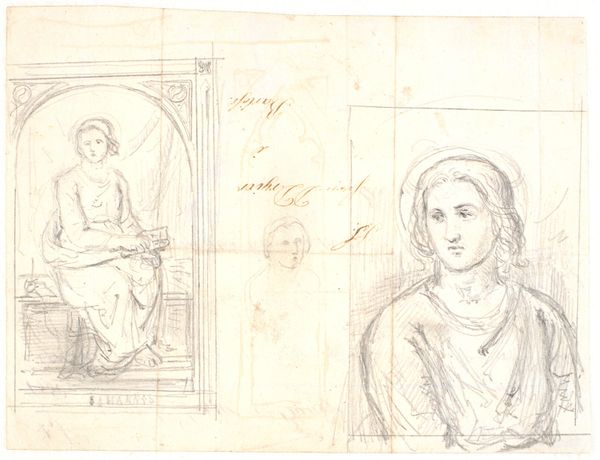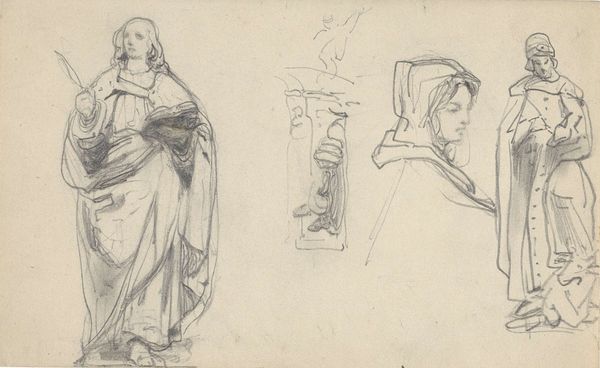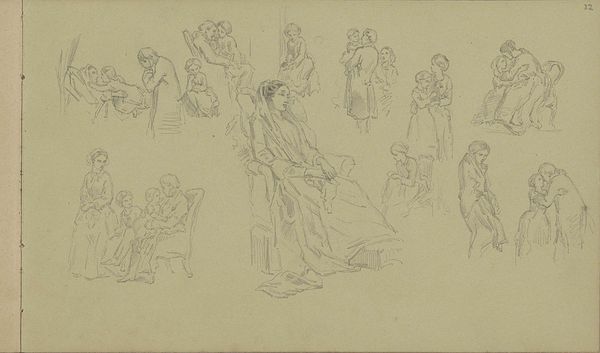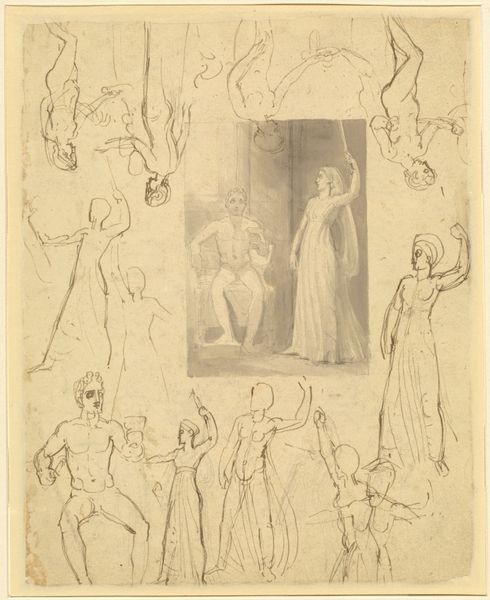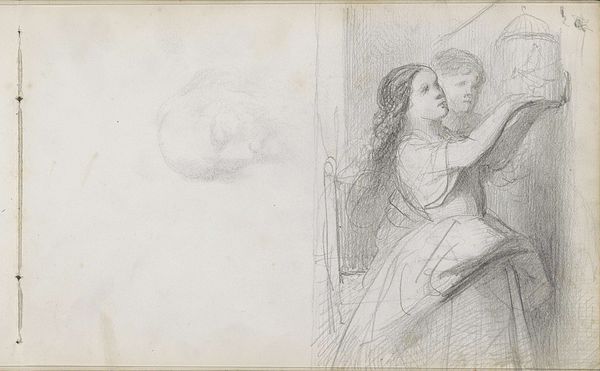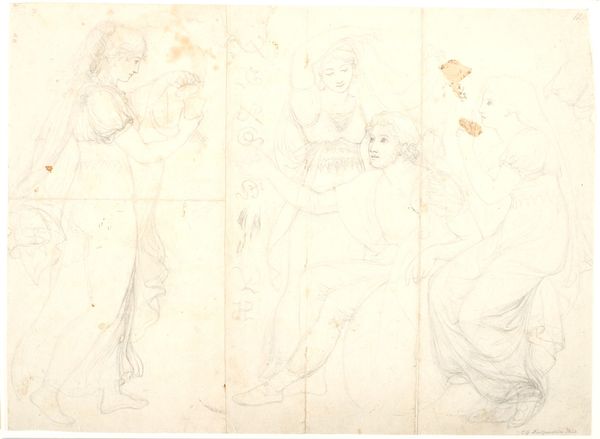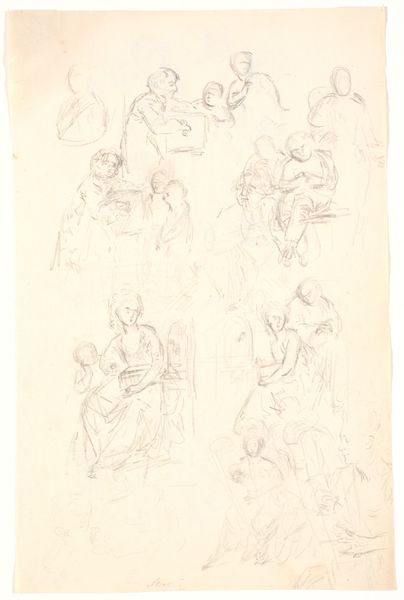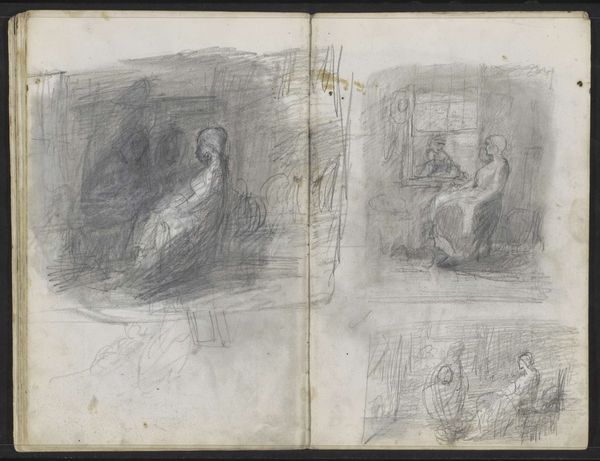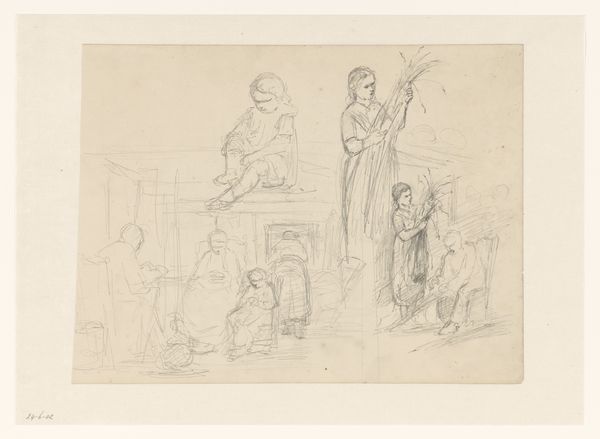
drawing, paper, pencil, graphite
#
portrait
#
pencil drawn
#
drawing
#
pencil sketch
#
figuration
#
paper
#
pencil
#
graphite
#
sketchbook drawing
#
pencil work
Copyright: Rijks Museum: Open Domain
Bastiaan de Poorter made this sheet of portrait studies with graphite, sometime in the mid-19th century. It gives us a glimpse into the visual culture of the Dutch middle classes at that time. The sheet shows us how the artist worked, trying out different poses and compositions. The ovals at the top left are reminiscent of the formal portraiture of the time, a mark of social status and aspiration. We might consider the growing importance of the middle class in the Netherlands at this time, following the end of the Napoleonic wars and the establishment of the Kingdom of the Netherlands. As wealth grew in the Netherlands, so did the demand for art that reflected the sitters’ prosperity and social standing. It’s likely that De Poorter needed to make a living from these commissions. To understand this artwork better, we might look at newspapers, magazines, and other visual materials from the time. This would help us to understand the social conventions that shaped the production and reception of art in the Netherlands.
Comments
No comments
Be the first to comment and join the conversation on the ultimate creative platform.

